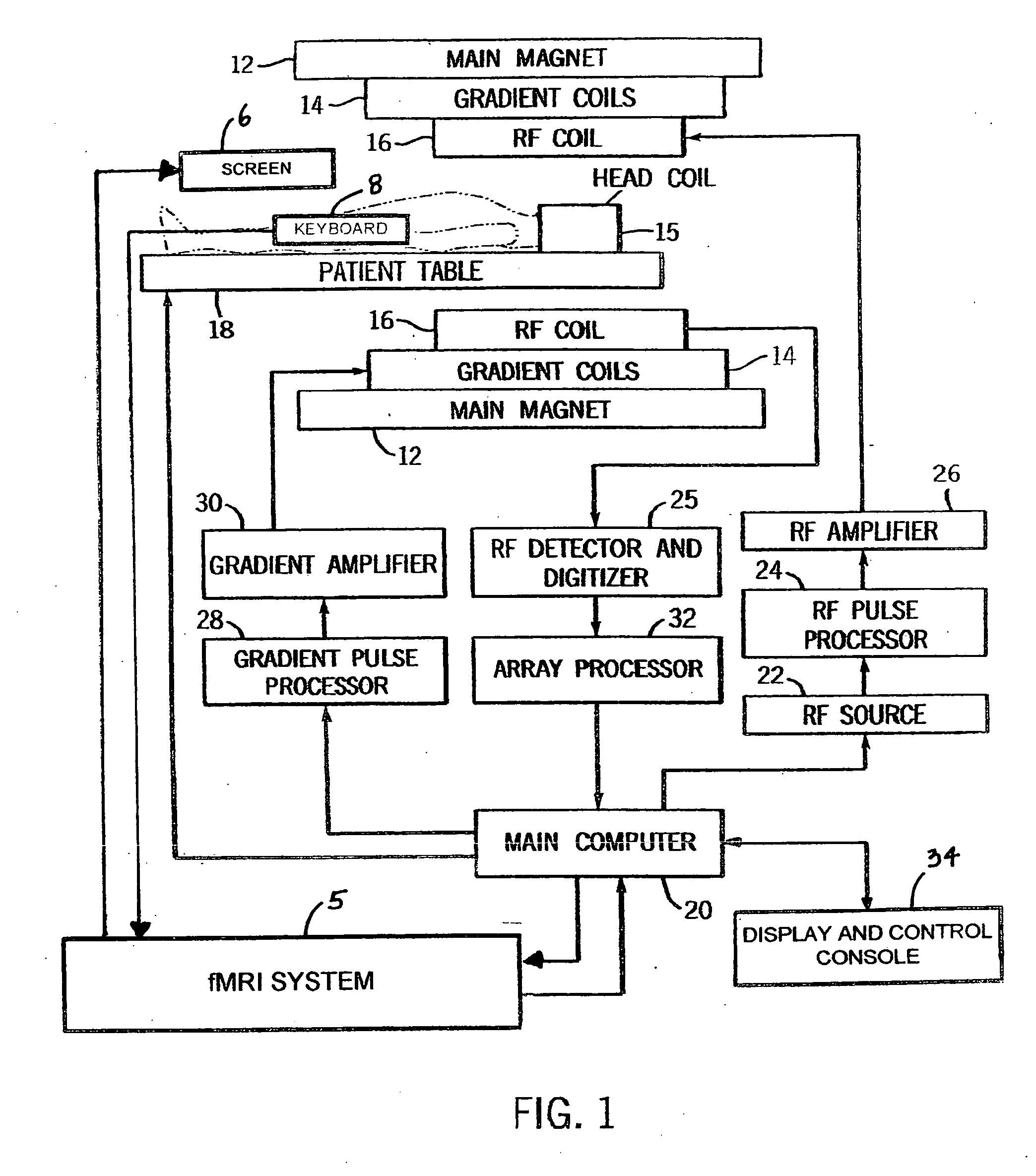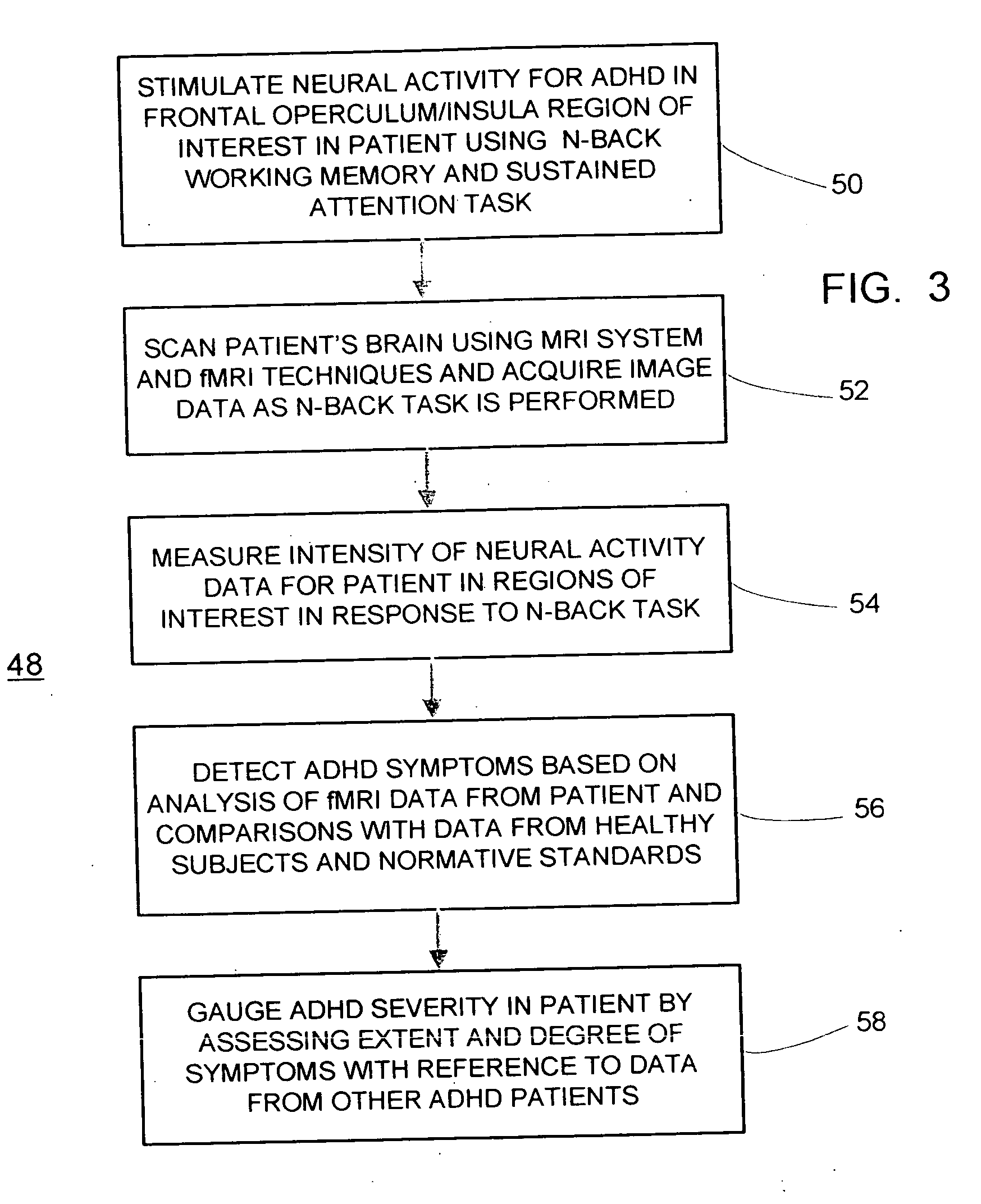fMRI system for detecting symptoms associated with Attention Deficit Hyperactivity Disorder
a hyperactivity disorder and attention deficit disorder technology, applied in the field of functional magnetic resonance imaging (fmri), can solve the problems of low academic achievement, developmentally inappropriate symptoms of inattention, impulsivity, etc., and achieve the effects of accurately diagnosing adhd, assessing the severity of the disorder, and consistent and reliable manner
- Summary
- Abstract
- Description
- Claims
- Application Information
AI Technical Summary
Benefits of technology
Problems solved by technology
Method used
Image
Examples
Embodiment Construction
[0018] Referring now to FIG. 1, the basic components of a magnetic resonance imaging (MRI) machine 10 are shown including the fMRI system 5, which operates in conjunction with the MRI machine 10. A main magnet 12 produces a strong B0 main magnetic field for use in the imaging procedure. Within the magnet 12 there are gradient coils 14 for producing a gradient in the B0 field in the X, Y, and Z directions as necessary to provide frequency discrimination. A head coil 15 is also used to improve accuracy and resolution for studies involving the brain. Within the gradient coils 14 there is a radio frequency (RF) coil 16 for producing RF pulses and generating the B1 transverse magnetic field necessary to rotate magnetic spins by 90° or 180°. The RF coil 16 also detects the return signal from the magnetic spins induced within the patient's body and supplies these signals to the RF detector and digitizer 25. The patient is positioned within the main magnet by a computer controlled patient t...
PUM
 Login to View More
Login to View More Abstract
Description
Claims
Application Information
 Login to View More
Login to View More - R&D
- Intellectual Property
- Life Sciences
- Materials
- Tech Scout
- Unparalleled Data Quality
- Higher Quality Content
- 60% Fewer Hallucinations
Browse by: Latest US Patents, China's latest patents, Technical Efficacy Thesaurus, Application Domain, Technology Topic, Popular Technical Reports.
© 2025 PatSnap. All rights reserved.Legal|Privacy policy|Modern Slavery Act Transparency Statement|Sitemap|About US| Contact US: help@patsnap.com



